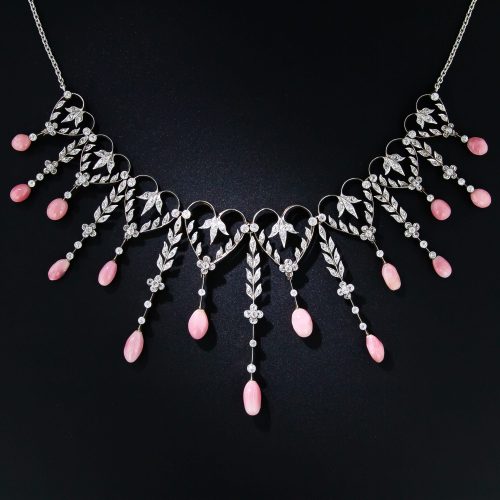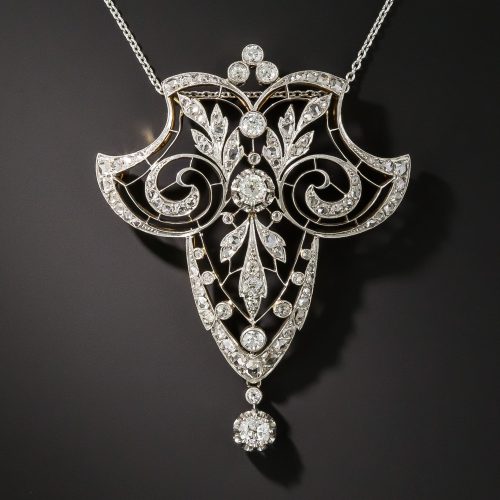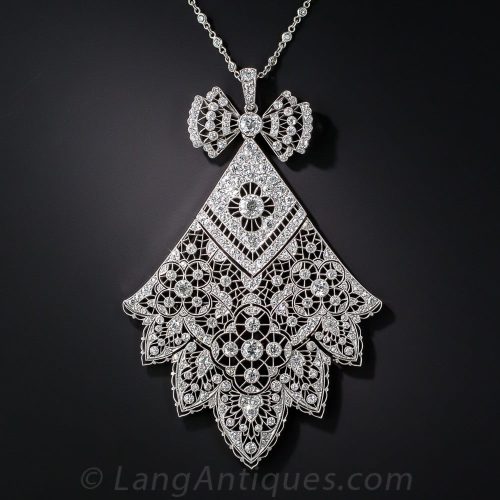


The movement called Edwardian in Great Britain was dubbed La Belle Époque (beautiful era) in France. The period dated c.1895-1914 flowed through the Edwardian era and was part of the French Third Republic. Also known as guirlande (or garland) style due to the many jewelers of the era who created lacy flora, ribbon, and bow garland motifs. Transformable items also became a feature of Belle Époque design, such as necklaces that could become tiaras. The trend evolved through consumer demand from those who wanted to maximize the wearability of their collection.
The extraordinary jewels of this period were made possible through the use of platinum and the abundance of diamonds coming from South Africa. Designs reflect the neoclassical and rococo motifs of the eighteenth-century French courts. Early inklings of La Belle Époque can be seen in the mid-nineteenth century when Empress Eugénie redesigned much of her vast jewelry collection in a Louis XVI style.
It is interesting to note that this style was developed in parallel with the distinctive Art Nouveau style, also garnering favor along the same timeline. Jewelers of the period often chose one style or the other as their signature, with some choosing to create jewels in both genres. When World War I brought the jewelry industry to a halt, La Belle Époque (along with Edwardian and Art Nouveau styles) came to an end. Following the war, jewelers could once again source precious metals and gems; it was the Belle Époque aesthetic that influenced the burgeoning Art Deco era.


